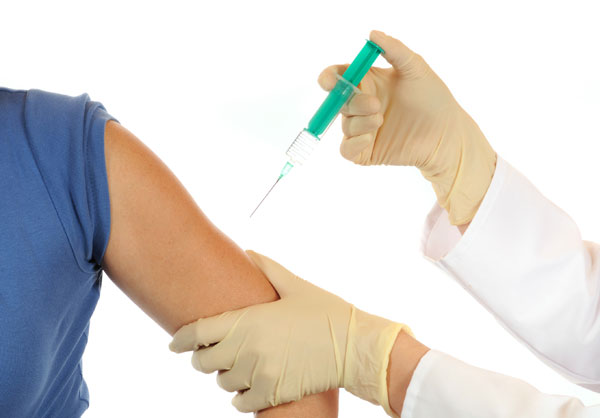How Do Ebola Vaccines Work?

Two experimental vaccines against Ebola are currently being tested to see whether they are safe to use in people, and health officials have said that millions of doses could be available by the end of next year. But how do the vaccines work?
Both vaccines essentially consist of a harmless virus that has been "spiked" with a protein from the Ebola virus, said Derek Gatherer, a bioinformatics researcher at Lancaster University in the United Kingdom who studies viral genetics and evolution.
If a person is given the vaccine, "the body thinks it's being infected with this rather innocuous virus, [and] part of the virus happens to be the Ebola protein," said Gatherer, who is not involved in work on the Ebola vaccines. This prompts an immune response, and the body develops antibodies against the Ebola protein, Gatherer said. [How Do People Survive Ebola?]
Ideally, if a vaccinated person were later exposed to the real Ebola virus, these antibodies would be ready to fight off the infection before it could take hold.
The first vaccine, which began safety testing this summer, is being developed by the National Institute of Allergy and Infectious Diseases (NIAID) and GlaxoSmithKline. It consists of a type of cold virus called an adenovirus that affects chimpanzees and has genetic material from two strains of Ebola: Zaire Ebola (which is causing the current outbreak in West Africa) and Sudan Ebola, according to NIAID.
The engineered adenovirus can't replicate in the human body. It's used to deliver the Ebola gene to a person's cells, which, in turn, produce a single Ebola protein. If the vaccine works as it should, this protein will cause an immune response. But in any case, it cannot cause Ebola virus disease, according to the NIAID.
The first test of the vaccine in people, called a Phase 1 trial, includes 20 healthy adults who will be injected with one of two doses of the vaccine.
Sign up for the Live Science daily newsletter now
Get the world’s most fascinating discoveries delivered straight to your inbox.
The second vaccine, called VSV-ZEBOV, consists of a virus that mainly infects animals (including rodents, cattle, swine and horses), called the vesicular stomatitis virus (VSV). In the vaccine, one gene of VSV has been replaced with the gene for the outer protein of the Zaire Ebola virus, according to the National Institutes of Health.
Safety testing of the VSV-ZEBOV vaccine began this month at the NIH, the agency said. The study involves 39 healthy adults who will be given either a low dose of the vaccine, a higher dose of the vaccine or a placebo. VSV-ZEBOV was developed by the Public Health Agency of Canada and was licensed to the biopharmaceutical company NewLink Genetics Corp.
Results of the safety trials are expected by December, and the second round of trials will begin in people in West Africa shortly thereafter, according to the World Health Organization. (The second round of testing is known as Phase 2 trials, which will further test vaccines' safety, and also look at its effectiveness.)
If the vaccines are effective, pharmaceutical companies could manufacture several hundred thousand doses in the first half of 2015, and millions of doses by the end of that year, WHO said.
Follow Rachael Rettner @RachaelRettner. Follow Live Science @livescience, Facebook & Google+. Original article on Live Science

Rachael is a Live Science contributor, and was a former channel editor and senior writer for Live Science between 2010 and 2022. She has a master's degree in journalism from New York University's Science, Health and Environmental Reporting Program. She also holds a B.S. in molecular biology and an M.S. in biology from the University of California, San Diego. Her work has appeared in Scienceline, The Washington Post and Scientific American.










